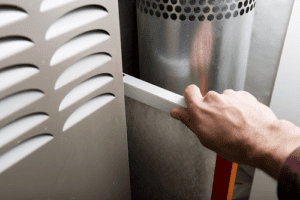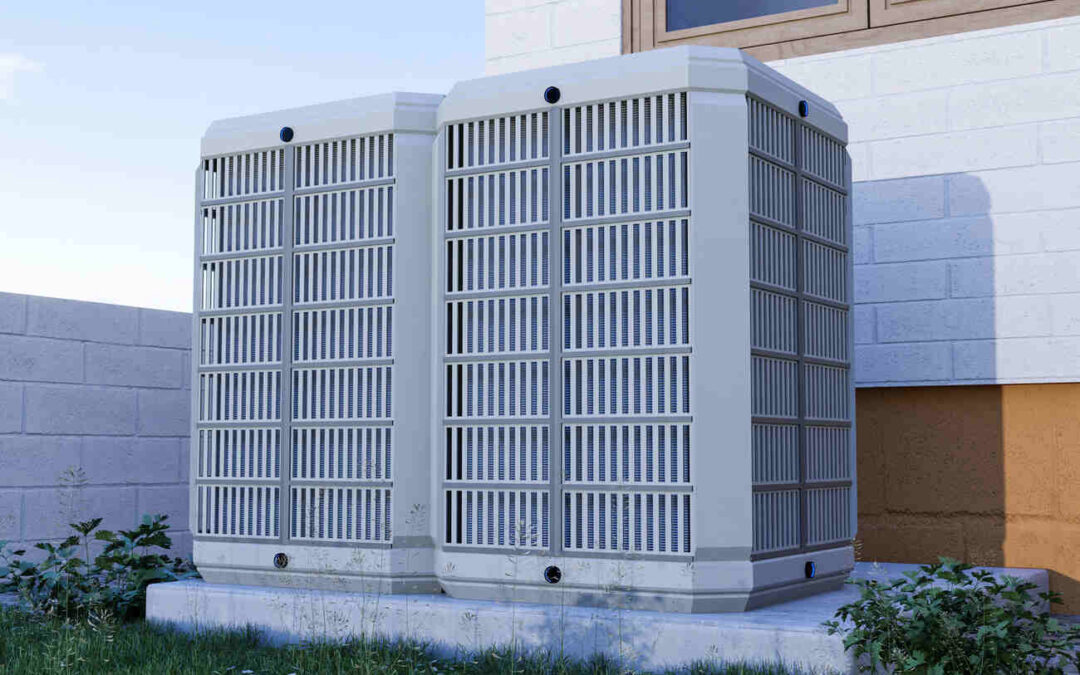Home heating is something that many homeowners take for granted. Until you need to conduct maintenance on your existing furnace or install a new one, most people aren’t likely to pay attention to how a furnace works. This is entirely normal, but it leaves many homeowners unprepared for those times when their heaters stop working. While there are two different kinds of gas furnaces – single-stage and two-stage furnaces – homes in our area will only really need the single-stage version. Thus, for the remainder of this article, we’ll be speaking about single-stage furnaces.
As we explore the inner workings of furnaces, we’ll examine the distinct components used in these systems and how those parts work together to create the heat on which you rely in the winter. Continue reading below to get the insider’s perspective on how furnaces work.
The Basic Residential Furnace Components
 Gas furnaces remain one of the most popular heating options throughout the world. The West Coast is no exception, so many people rely on gas heating to stay warm in the winter. There are several reasons that these heaters are popular:
Gas furnaces remain one of the most popular heating options throughout the world. The West Coast is no exception, so many people rely on gas heating to stay warm in the winter. There are several reasons that these heaters are popular:
- They are relatively inexpensive to install.
- They can be very efficient when using natural gas.
- They use ventilation systems that air conditioning systems also use.
At their core, furnaces are composed of a fuel source (heating oil or natural gas that gets piped into your home), an ignition source (the pilot light that burns the gas), the heat exchanger (where the furnace heats the air for use in your home), and the ventilation system. There are several other essential components:
- A thermostat to regulate when the furnace is on.
- A filter to remove pollutants from the air as it enters the furnace.
- Vents and registers to circulate the air throughout your home.
In combination, these components form the home furnace.
How a Furnace Works by Using Those Parts in Concert
While you’ve undoubtedly seen these parts throughout your life, you might not know precisely how they work together, even if you’ve needed maintenance for your HVAC system. It’s best to consider how a furnace works using these parts in the order of when they’re used to heat your home:
- Fuel Source – When you connect your house to a natural gas line or have an oil tank next to your furnace, you have the fuel, you need to keep your home warm during the winter. Your furnace will burn this fuel to heat the gas within your furnace.
- Ignition Source – The pilot light must remain on so that your furnace safely burns the fuel source when you turn on the system. Without the pilot, you would be venting natural gas into your home or draining heating oil into your basement.

- Heat Exchanger – This component is the most complicated part of your heating system, as it takes the heated air and mixes it with the air in your home. If you were merely to add the heated air to your house, the pressure would gradually build up. This pressure would make your home uncomfortable and potentially cause problems for your heating system.
- Ventilation System – Generally, the ductwork is placed within your walls and beneath your floorboards so that the furnace’s heat can spread throughout your home. It’s essential to keep this ventilation clean through periodic semi-annual cleanings, as well as occasionally wiping down the vents and registers in your home.
- Thermostat – The thermostat should be placed in a regularly-used area of the home. This device will use its ambient temperature to regulate when the furnace is on or off, so if it’s next to a drafty part of your home, the rest of the house may heat up too much. Conversely, if it’s placed directly next to an air vent, the rest of your home may remain too cold.
- Intake Filter – Your furnace takes in air from the room around it, which often contains dust and other pollutants. An efficient air filter can prevent that dust from getting into your furnace and ventilation system, ultimately improving your air quality and reducing the amount of dust buildup in your vents.
Those major components work together to ensure that your home remains comfortable even on the coldest winter nights. If any of those parts are malfunctioning, you’ll need to contact a service technician to help restore things to their right order.
Building on Your Understanding of How a Furnace Works
HVAC technicians can use the nature of a problem to determine where the root issue may be. As long as you’re not venting gas directly into your home due to a malfunctioning ignition source, most issues you’ll encounter are more of an inconvenience. If you want to ensure that your family doesn’t have to rely on portable space heaters to keep warm, then it’s best to take this understanding of how a furnace works and remain alert to any issues that arise. With a little preventive maintenance, you can keep your home warm and comfortable all year.

